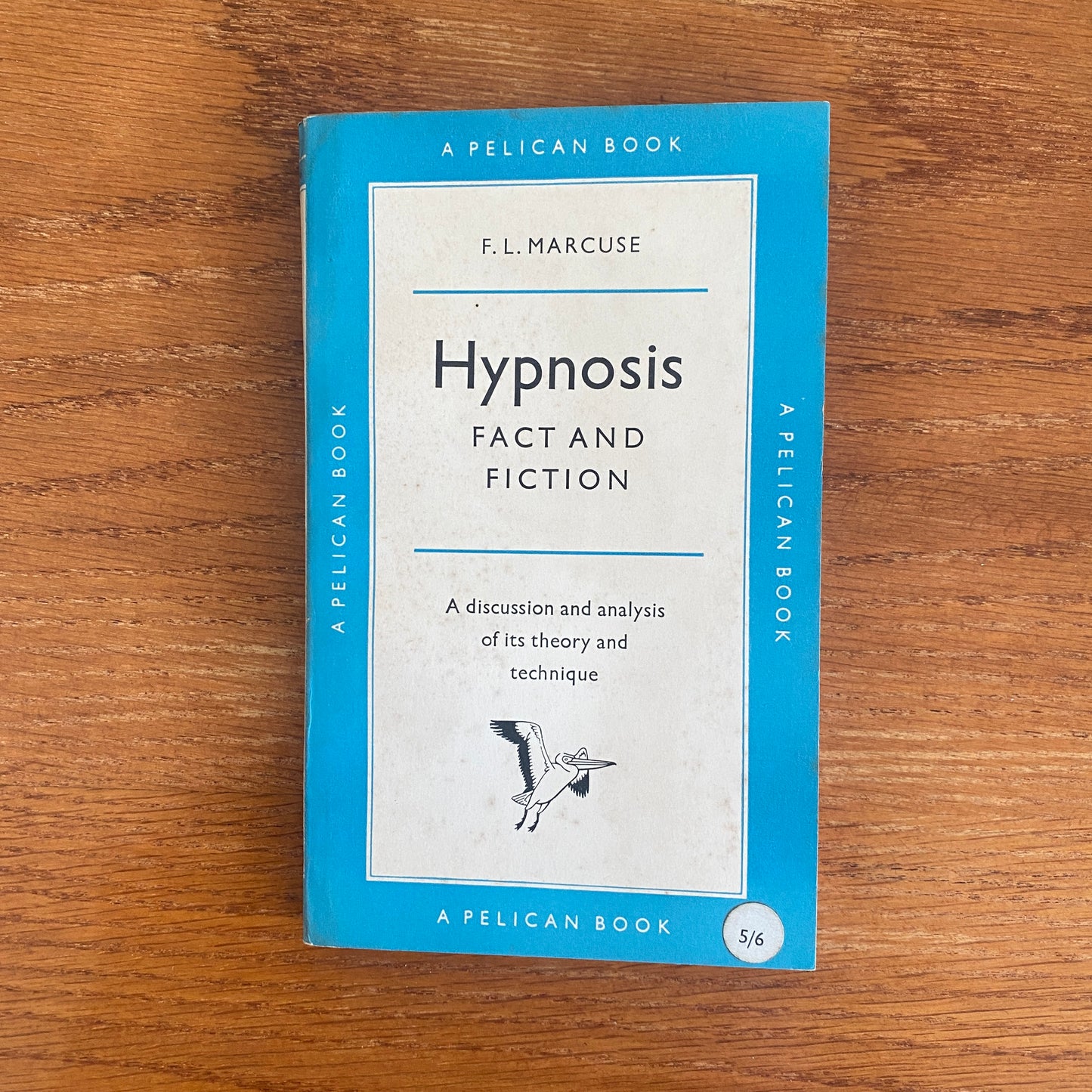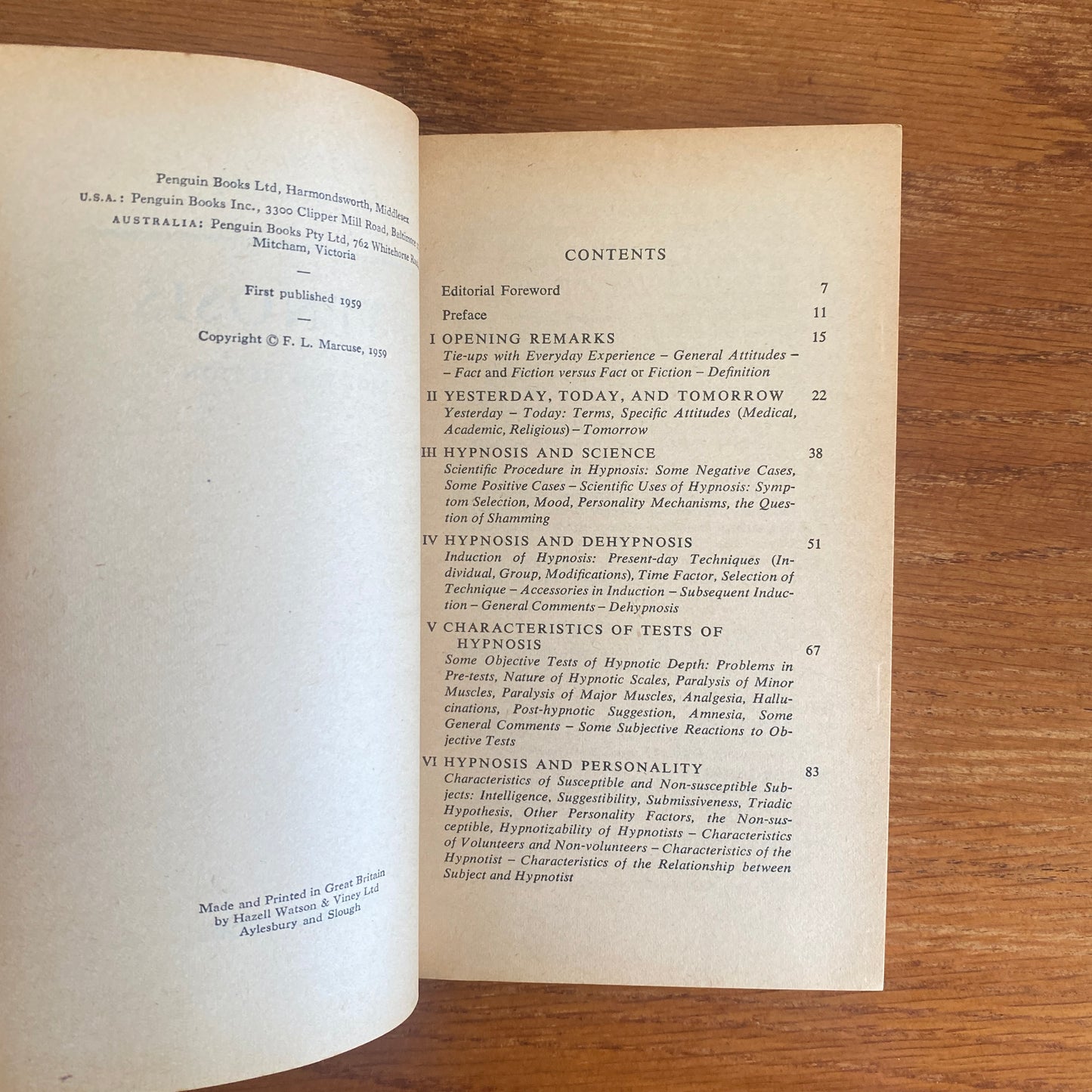Rumorbooks
Hypnotism - F. L. Marcuse
Hypnotism - F. L. Marcuse
Couldn't load pickup availability
“Hypnotism” by F. L. Marcuse is a detailed exploration of the art and science of hypnotism, blending historical context, theoretical foundations, and practical applications. The book is divided into several sections that collectively provide a comprehensive understanding of hypnotism.
1. Historical Overview:
• The book begins with a thorough history of hypnotism, tracing its origins from ancient rituals to its formalization as a scientific discipline. Key historical figures, including Franz Mesmer and James Braid, are discussed, highlighting their contributions to the field.
2. Theoretical Foundations:
• Marcuse delves into the psychological and physiological bases of hypnotism. He explores various theories of how hypnosis works, including the roles of suggestibility and the subconscious mind. The concept of the hypnotic trance and its characteristics are examined in depth.
3. Hypnotic Techniques:
• A significant portion of the book is dedicated to the practical aspects of hypnotism. Marcuse describes various induction techniques, from traditional verbal suggestions to more modern methods. He provides detailed instructions on how to guide subjects into and out of trance states, as well as how to deepen the trance for more profound effects.
4. Therapeutic Applications:
• The therapeutic potential of hypnotism is a major focus. Marcuse discusses how hypnosis can be used to treat a range of conditions, including anxiety, phobias, and pain. He presents case studies that demonstrate the effectiveness of hypnotic interventions in clinical settings.
5. Research and Case Studies:
• The book includes numerous case studies and references to contemporary research, providing evidence for the efficacy of hypnotism. Marcuse critically evaluates the successes and limitations of hypnotic therapy, offering a balanced view of its potential.
6. Ethical Considerations:
• Marcuse addresses the ethical implications of using hypnotism, emphasizing the importance of responsible practice. He discusses the potential risks and how to mitigate them, ensuring that practitioners understand the moral responsibilities involved.
“Hypnotism” by F. L. Marcuse is a seminal work that offers a rich blend of history, theory, and practical guidance. It serves as an essential resource for both novice and experienced practitioners, as well as anyone interested in the science of hypnotism. Through detailed explanations and real-world examples, Marcuse provides readers with a deep understanding of how hypnotism can be effectively and ethically applied in various contexts.
He was educated at Strathcona Academy, Montreal, and Queen's University, Kingston, Ontario, where he took his B.A. (Psychologay and Political Science) and M.A. (Psychology and Biology) degrees. In 1942 he obtained a Ph.D. in Psychology and Neurology from Cornell University, Ithaca, New York, where he was awarded the Susan Linn Sage Fellowship in 1940 and appointed to the Psychology Department in 1941, becoming Assistant Professor in 1946. He left Cornell in 1950 to go to the State College of Washington, where he was appointed Associate Professor and in 1958 Professor in the Department of Psychology. He is a member of the American Psychological Association, the American Association for the Advancement of Science, the British Society of Medical Hypnotists, the American Academy of Psychotherapists, Fellow of the Society for Clinical and Experimental Hypnosis, and President of Washington State Psychological Association. He has written many articles in scientific journals on psychology, hypnosis, and allied subjects, and has edited a book, Areas of Psychology.
Share






